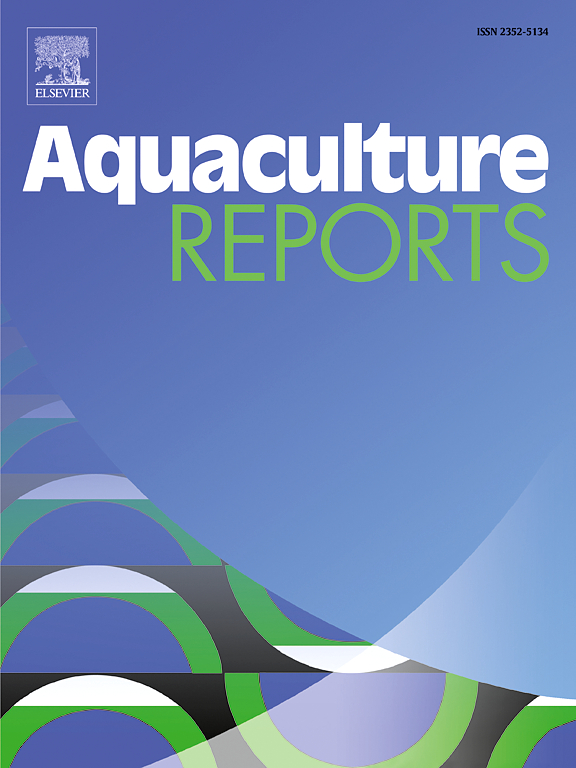Incorporation of reduced glutathione to the extender improves frozen-thawed sperm function and fertility potential in mandarin fish (Siniperca chuatsi)
IF 3.2
2区 农林科学
Q1 FISHERIES
引用次数: 0
Abstract
Semen cryopreservation is a valuable tool for assisted reproduction in aquatic species. Despite the various advantages in hatchery practices, damage occurred during the process of freezing and thawing can result in compromised sperm quality. Supplementation of antioxidant in the freezing medium is suggested to be an effective strategy against cryodamage. Therefore, the objective of this study was to investigate the potential effects of reduced glutathione (GSH) on post-thaw sperm quality and fertility in mandarin fish (Siniperca chuatsi). Semen was diluted with freezing medium at a ratio of 1:6 (v/v), with GSH supplemented at different concentrations (0, 1, 2, 4, 8 mM) and then subjected to cryopreservation. Sperm motion parameters, viability, mitochondrial activity, lipid peroxidation, and apoptosis were assessed after thawing. The addition of GSH at 4 mM presented significantly higher (P < 0.05) post-thaw sperm total motility (%, 71.7 ± 7.2 vs. 64.6 ± 2.2), progressive motility (%, 14.9 ± 2.8 vs. 10.7 ± 0.4), curvilinear velocity (μm/s, 59.6 ± 4.5 vs. 51.2 ± 0.9), straight line velocity (μm/s, 25.3 ± 2.4 vs 22.1 ± 0.5), and average path velocity (μm/s, 37.3 ± 3.6 vs. 32.7 ± 0.6), compared to the control group. Viability was higher (P < 0.05) in sample supplemented with 2 mM GSH (82.0 ± 5.4 %) compared to other groups. In addition, GSH-supplemented samples showed significantly higher mitochondrial activity and a lower level of apoptosis (P < 0.05) compared to the control. Regarding lipid peroxidation, the rate was lower in treatments supplemented with GSH, although not significant (P > 0.05). After artificial insemination, a higher fertilization rate was recorded with GSH at concentrations of 2 and 4 mM (P < 0.05). Moreover, a significantly higher hatching rate (P < 0.05) was observed in the 2 mM GSH-treated group. In conclusion, the addition of GSH seems to provide a cryoprotective effect for mandarin fish sperm, resulting in improved post-thaw sperm quality and fertilizing capacity.
求助全文
约1分钟内获得全文
求助全文
来源期刊

Aquaculture Reports
Agricultural and Biological Sciences-Animal Science and Zoology
CiteScore
5.90
自引率
8.10%
发文量
469
审稿时长
77 days
期刊介绍:
Aquaculture Reports will publish original research papers and reviews documenting outstanding science with a regional context and focus, answering the need for high quality information on novel species, systems and regions in emerging areas of aquaculture research and development, such as integrated multi-trophic aquaculture, urban aquaculture, ornamental, unfed aquaculture, offshore aquaculture and others. Papers having industry research as priority and encompassing product development research or current industry practice are encouraged.
 求助内容:
求助内容: 应助结果提醒方式:
应助结果提醒方式:


